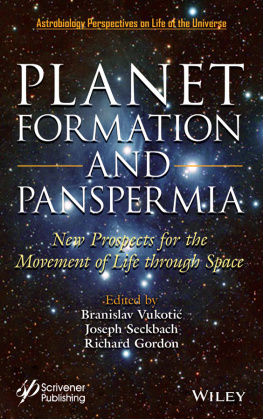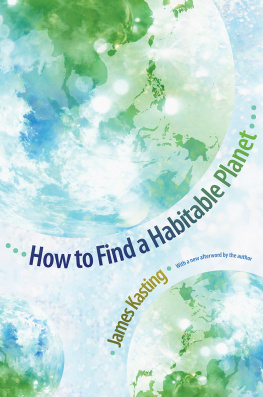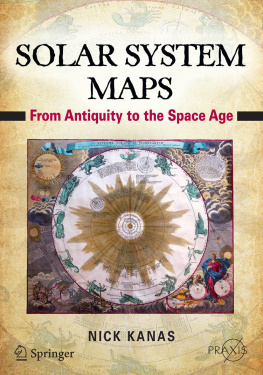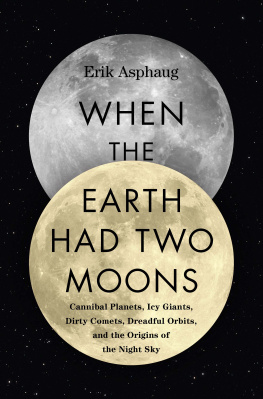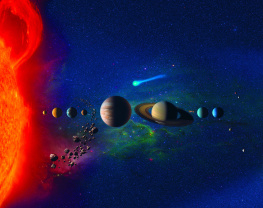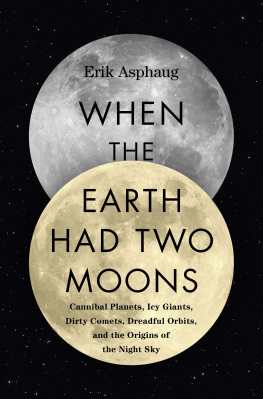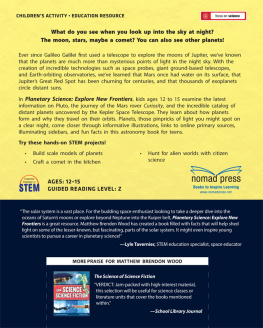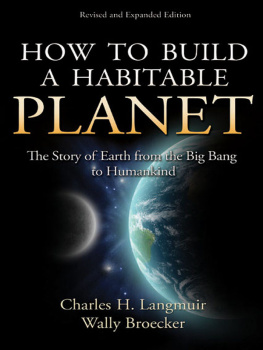
WILEY END USER LICENSE AGREEMENT
Go to www.wiley.com/go/eula to access Wileys ebook EULA.
Scrivener Publishing
100 Cummings Center, Suite 541J
Beverly, MA 01915-6106
Astrobiology Perspectives on Life of the Universe
Series Editors: Richard Gordon and Joseph Seckbach
In his 1687 book Principia, Isaac Newton showed how a body launched atop a tall mountain parallel to the ground would circle the Earth. Many of us are old enough to have witnessed the realization of this dream in the launch of Sputnik in 1957. Since then our ability to enter, view and understand the Universe has increased dramatically. A great race is on to discover real extraterrestrial life, and to understand our origins, whether on Earth or elsewhere. We take part of the title for this new series of books from the pioneering thoughts of Svante Arrhenius, who reviewed this quest in his 1909 book The Life of the Universe as Conceived by Man from the Earliest Ages to the Present Time. The volumes in Astrobiology Perspectives on Life of the Universe will each delve into an aspect of this adventure, with chapters by those who are involved in it, as well as careful observers and assessors of our progress. Guest editors are invited from time to time, and all chapters are peer-reviewed.
Publishers at Scrivener
Martin Scrivener ()
Phillip Carmical ()
Planet Formation and Panspermia
New Prospects for the Movement of Life through Space
Edited by
Branislav Vukoti
Astronomical Observatory, Belgrade, Serbia
Richard Gordon
Gulf Specimen Marine Laboratory & Aquarium, Panacea, FL, USA and Wayne University, Detroit, MI, USA
and
Joseph Seckbach
The Hebrew University of Jerusalem, Israel

This edition first published 2021 by John Wiley & Sons, Inc., 111 River Street, Hoboken, NJ 07030, USA and Scrivener Publishing LLC, 100 Cummings Center, Suite 541J, Beverly, MA 01915, USA
2021 Scrivener Publishing LLC
For more information about Scrivener publications please visit www.scrivenerpublishing.com.
All rights reserved. No part of this publication may be reproduced, stored in a retrieval system, or transmitted, in any form or by any means, electronic, mechanical, photocopying, recording, or otherwise, except as permitted by law. Advice on how to obtain permission to reuse material from this title is available at http://www.wiley.com/go/permissions.
Wiley Global Headquarters
111 River Street, Hoboken, NJ 07030, USA
For details of our global editorial offices, customer services, and more information about Wiley products visit us at www.wiley.com.
Limit of Liability/Disclaimer of Warranty
While the publisher and authors have used their best efforts in preparing this work, they make no representations or warranties with respect to the accuracy or completeness of the contents of this work and specifically disclaim all warranties, including without limitation any implied warranties of merchantability or fitness for a particular purpose. No warranty may be created or extended by sales representatives, written sales materials, or promotional statements for this work. The fact that an organization, website, or product is referred to in this work as a citation and/or potential source of further information does not mean that the publisher and authors endorse the information or services the organization, website, or product may provide or recommendations it may make. This work is sold with the understanding that the publisher is not engaged in rendering professional services. The advice and strategies contained herein may not be suitable for your situation. You should consult with a specialist where appropriate. Neither the publisher nor authors shall be liable for any loss of profit or any other commercial damages, including but not limited to special, incidental, consequential, or other damages. Further, readers should be aware that websites listed in this work may have changed or disappeared between when this work was written and when it is read.
Library of Congress Cataloging-in-Publication Data
ISBN 978-1-119-64039-4
Cover image: Courtesy of NASA
Cover design by Russell Richardson
Set in size of 11pt and Minion Pro by Manila Typesetting Company, Makati, Philippines
Printed in the USA
10 9 8 7 6 5 4 3 2 1
Preface
The panspermia hypothesis dates back to the works of ancient philosophers. In the 1800s, organics in meteorites were considered by the Swedish chemist Jacob Berzelius [1.3] [1.4] and later German physician Hermann E. Richter [1.15] speculated on the possibility of life transport by meteors. Lord Kelvin [1.9], discussed the possibility of panspermia in his Presidential Address to the British Association for the Advancement of Science. At the beginning of the next century, Swedish physicist/chemist Svante August Arrhenius (1908) presented his book on the panspermia theory [1.2]. There is a long history from before this time through the last century of claims of finding life in meteorites [1.6]. Astronomical sciences also developed significantly during this period to the point where we can observe gravitational waves from merging black holes, which was hardly imaginable just a few decades ago, and visualize black holes. With the discovery of many exoplanets astrobiology has matured as a scientific discipline. A tentative discovery of the intergalactic meteor particle in 2007 [1.1] and recent discoveries of an anomalous object Oumuamua [1.11] and comet 2I/Borisov [1.8], that appear to have visited us from outside the Solar system, point out that our planet and its host star may not be an isolated island, in an otherwise lifeless universe. They are likely to exchange matter with the other stars from their vicinity as probably is the case with other stellar systems too, perhaps containing life. There is currently a bias that any such panspermia, if they exist, are prokaryotes [1.13] [1.16] or rugged, microscopic Eukaryotes [1.14].
In addition to transporting the physical bodies of microorganisms, another important aspect is the transport of biological information about these living systems. After all, the evolution of life on Earth is about altering the genetic code, either by natural or artificial means. Given that the organic matter, the building blocks for living organisms, is omnipresent in the universe, the aforementioned information might in some way be considered as the essence of life, at least in our current genocentric view of life [1.5]. The aspect of sending just the information signal in order to spread life is investigated in the visionary sci-fi novel His Masters Voice by Polish writer Stanislaw Lem, first published in 1968 [1.10]. Contemporary with the beginning radio SETI searches [1.18], this offered a convergence point between sending and receiving SETI signals and the panspermia hypothesis. Information panspermia was later born in 2005 with the work of Vahe Gurzadyan [1.7].
In times when a number of exciting new discoveries are made and the new ones seem to be just around the corner, the millenia old panspermia hypothesis has not yet matured into a full fledged theory and some of its aspects might still not have been envisioned. Along the lines of scientific falsificationism, we can consider that no evidence against panspermia are found to date and that much of the controversy still remains [1.12]. The search is even more active in the opposite direction but still there is an evident lack of convincingly non-terrestrial microorganisms on Solar system bodies other than Earth. The recent experiments with micro-organisms exposed to space conditions at the International Space Station offer accumulating evidence that these organisms can withstand the harsh conditions of open space for long periods of time while preserving their biological potential. Even more, there are mounting concerns that human made space vehicles can spread life from our biosphere to other bodies of the Solar system, the most recent one being that the Israeli space mission that transported tardigrades to the Moon [1.17].
Next page
